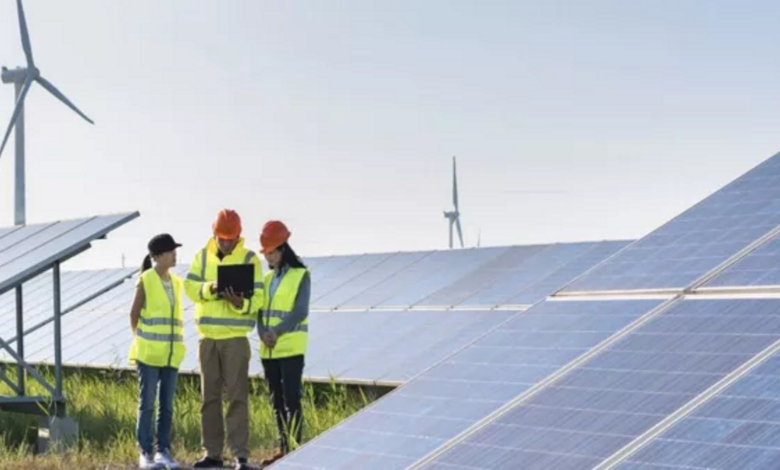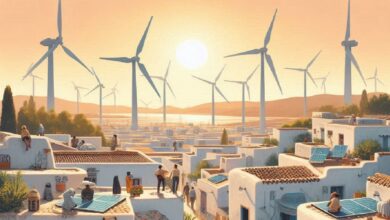Renewable energy achieves record growth of 9.6% in productive capacity sources despite energy crisis

A new report by the International Renewable Energy Agency (IRENA) revealed that renewable energy generation capacity reached 3,372 gigawatts (GW) by the end of 2022. Increasing the renewable energy stock by 9.6% or 295 GW. 83% of the total new generation capacity last year was generated from renewable energy sources.
The Renewable Energy Generation Capacity Statistics 2023 report, published by IRENA, indicated that renewable energy continued to grow at record levels. Despite the uncertainty surrounding the world, which confirms the decline in the trend towards generating energy from fossil fuels.
“This continued record growth reflects the resilience of renewables in the face of the ongoing energy crisis,” said Francesco La Camera, IRENA Director-General. “The strong business case for renewables, coupled with supportive policies, has helped the share of renewables in the global energy mix grow year on year.
However, annual renewable capacity additions will need to triple their current levels by 2030. If we are to stay on track to limit temperature rise to 1.5°C.”
While many countries added their renewable capacity in 2022. The big growth was concentrated in a handful of countries and regions, including Asia, the United States and Europe. IRENA data shows that around half of the total new capacity added in 2022 was in Asia.
This brought the total renewable capacity added by the end of 2022 to 1.63 terawatts. China was the biggest contributor to this increase, adding more than 141 gigawatts of new capacity to the continent.
Renewables in Europe and the United States grew by 57.3 GW and 29.1 GW respectively. Africa continued to add renewable capacity by 2.7 GW, slightly up on the previous year. Oceania maintained double-digit growth of 5.2 GW, as did South America with 18.2 GW.
The Middle East recorded its highest growth on record, with new capacity coming on stream in 2022 reaching 3.2 GW, up 12.8%.
La Camera added:
“With energy demand expected to increase in many regions of the world. The energy transition requires a step-by-step change that goes beyond decarbonization on the supply side.
Given recent international events, any expansion in new non-renewable capacity must be coupled with efforts. To accelerate the energy transition to make the energy system more resilient, inclusive and climate-resilient.”
Although hydropower accounted for the largest share of global renewable energy capacity at 1,250 GW. Solar and wind continue to dominate new capacity, together accounting for 90% of total capacity in 2022. Solar power capacity was the largest, increasing by 22%, followed by wind power, which increased by 9%.
Key developments by technology:
Hydropower: Renewable hydropower capacity increased by 21 GW (+2%), with a consistent expansion in recent years.
Wind power: Wind power continued to grow at a slower pace than in the previous two years. Increasing by 75 GW (+9%).
Solar power: Solar photovoltaic (PV) accounted for most of the increase in solar capacity in 2022, adding 191 GW.
Bioenergy: Bioenergy growth slowed somewhat in 2022 (+7.6 GW compared to +8.1 GW in 2021).
Geothermal: A modest increase of 181 MW.
Off-grid electricity: Off-grid electricity generation capacity grew by 1,237 MW in 2022 (+11%) to reach 12.4 GW.



